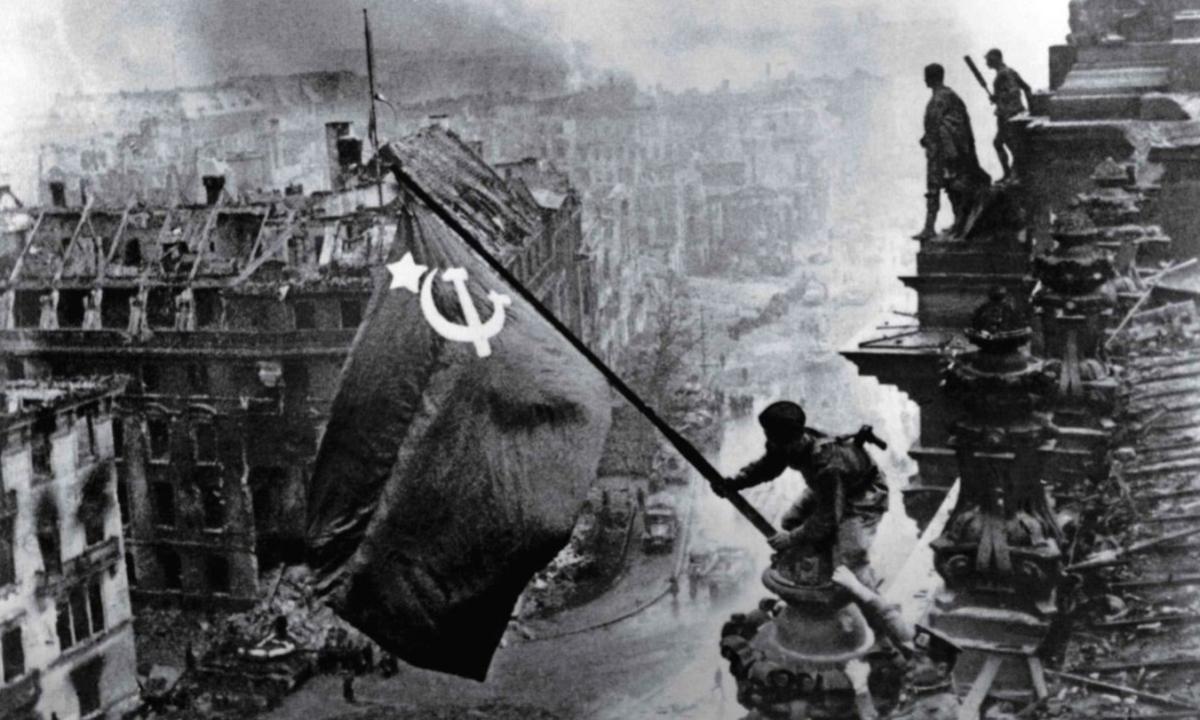
Historical Consciousness: What Germany Could Learn from Russia
Introduction
Peter Hanseler was invited to speak on the topic “What Germany could learn from Russia” at the “Courage for Ethics” conference, which took place from August 29 to 31 in Sirnach, Switzerland. This article is based on that speech.
The European working group “Mut zur Ethik” (Courage for Ethics) is an international forum that has been organizing a major annual conference in Switzerland since the early 1990s. It sees itself as a circle of personalities from various European countries (and beyond) who are committed to a people-oriented, value-based ethic. It attaches particular importance to not following ideological trends in social, political, economic, and educational issues, but rather to seeking guidance from “objective ethics.”
It depends on whom you ask
If you were to ask Friedrich Merz what we could learn from the Russians, his answer would surely be: “Nothing!” The German Chancellor is so convinced of himself that he fails to notice the downward spiral of this once-great country of poets and thinkers, which was the world's leading exporter just a few years ago. Approval rating of this little boy: Only 21% are satisfied with Merz.

This shows that this intellectual dwarf in a long body sees himself as a new leader, because a real leader does not care about approval ratings. Recently, this chancellor uttered the following phrase, which is hard to believe:
“There is a deep-seated fear of war among parts of our population. I don't share it, but I can relate to it.”
Friedrich Merz
“The German people sleep while standing.”
When I discussed this topic with German friends, the mood was gloomy, because in addition to the insane politicians who are a tradition in Germany, the people are obviously unable or unwilling to recognize the precarious situation once again. Nevertheless, one of my closest friends made everyone laugh with the following bon mot: “The German people sleep while standing.”
Those who do not learn from the past are doomed to repeat it.
If you don't take an honest and critical look at your history, you will keep making the same mistakes. Unlike Mark Twain, history does not rhyme with such behavior, but repeats itself. Incidentally, this applies not only to countries, but also to people. We all make mistakes, and many people learn from them, fools, however, do not—they make the same mistakes over and over again. You can recognize these behavior patterns in yourself—and even more often in others. The famous look in the mirror is therefore a tool that is—or could be—equally valuable in private life and in geopolitics.
Historical Awareness Starts with Language
I use the term “historical consciousness” because I consider it the best antidote to the repetition of catastrophes. However, historical consciousness requires a great deal of skepticism when looking at one’s own history, and the Russians are already world champions in this regard. Russians do not believe anything they are told, whether by history books, the media, or governments—even their own. Russians have a natural ability to question everything they are told—including their own historiography. This leads to discussions, and the more diverse the opinions in such discussions, the healthier the outcome. It is not important to me whether, for example, Stalin is seen by a colleague as a positive or negative person after weighing up all the factors; the discussion itself clearly reduces the chances of negative events repeating themselves in the future.
People are not Monsters—that would be too Simple
It is very convenient, too convenient, to label Adolf Hitler and Joseph Stalin as the worst figures of all time and relegate them to the same category labeled “monsters.” After all, monsters are not something we need to engage with, but people are. But both of these historical figures were human beings and had a lasting impact not only on their own countries but on the entire world. It is therefore necessary to engage with them in order to understand them, if we want to ensure that history does not repeat itself.
In Russia, Joseph Stalin is not regarded as a monster, but as an important historical figure who had an enormous influence on the country. He is highly controversial, and opinions and reactions to him are sometimes contradictory. However, their ability to engage in unbiased discussion of even such emotionally difficult topics, based on skepticism, allows Russians to treat historically sensitive issues with respect, dignity, and reverence for history.
My ex-wife's great-great-aunt, for instance, was sentenced by Stalin in the 1930s to 15 years in a Siberian labor camp for a trivial offense. She survived this nightmare and returned to society. When Stalin died a few years later, she wept bitterly over his death. We in the West find this contradictory, because this behavior is surprising and shows how closely the positive and negative can be linked to a person.
One side shows almost limitless brutality. The other side shows Stalin's big achievements. Two achievements stand out: Stalin was responsible for the rapid industrialization of the Soviet Union. He showed foresight and precision in his analysis that can seem almost scary.
Furthermore, his leadership during World War II turned a near defeat into victory, as he united the population, motivated them to superhuman achievements and—unlike Hitler—let the right military leaders take the decisions. Victory came at a high price, but it was achieved.
For a Westerner, these undisputed achievements are difficult to comprehend against the backdrop of the enormous piles of corpses left behind. Nevertheless, the heated discussion about Stalin in Russia, a very strenuous and at times unpleasant debate, will most likely make it impossible for the horrific aspects of Stalin's rule to be repeated in the future.
The discussion in Germany about Hitler never went beyond describing him as a monster. It was easier to sweep this “monster” under the carpet and flatten everything associated with him. If the Obersalzberg and the Reich Chancellery were still standing, Germans would be aware of Hitler’s megalomania – nothing to do with being close to the people.

Last year, I visited Stalin's dacha in Sochi and was surprised by the simplicity of his living quarters. His offices in the Moscow Kremlin were also by no means ostentatious.
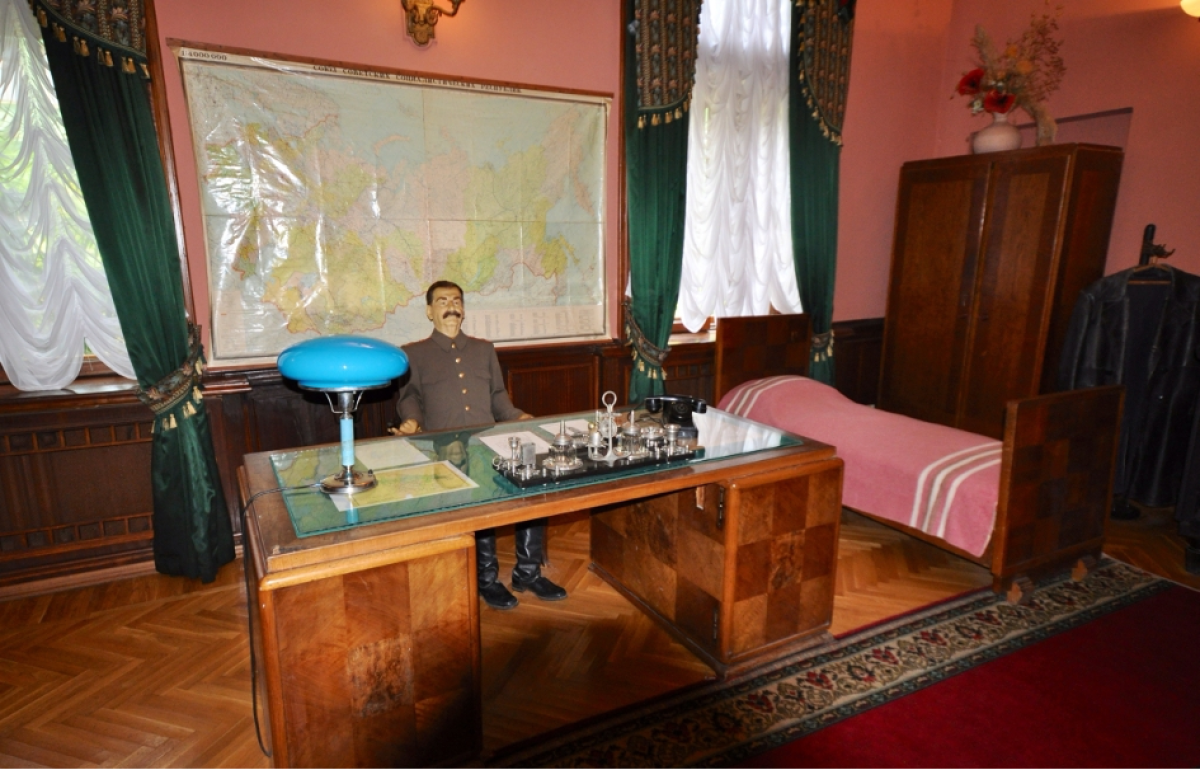
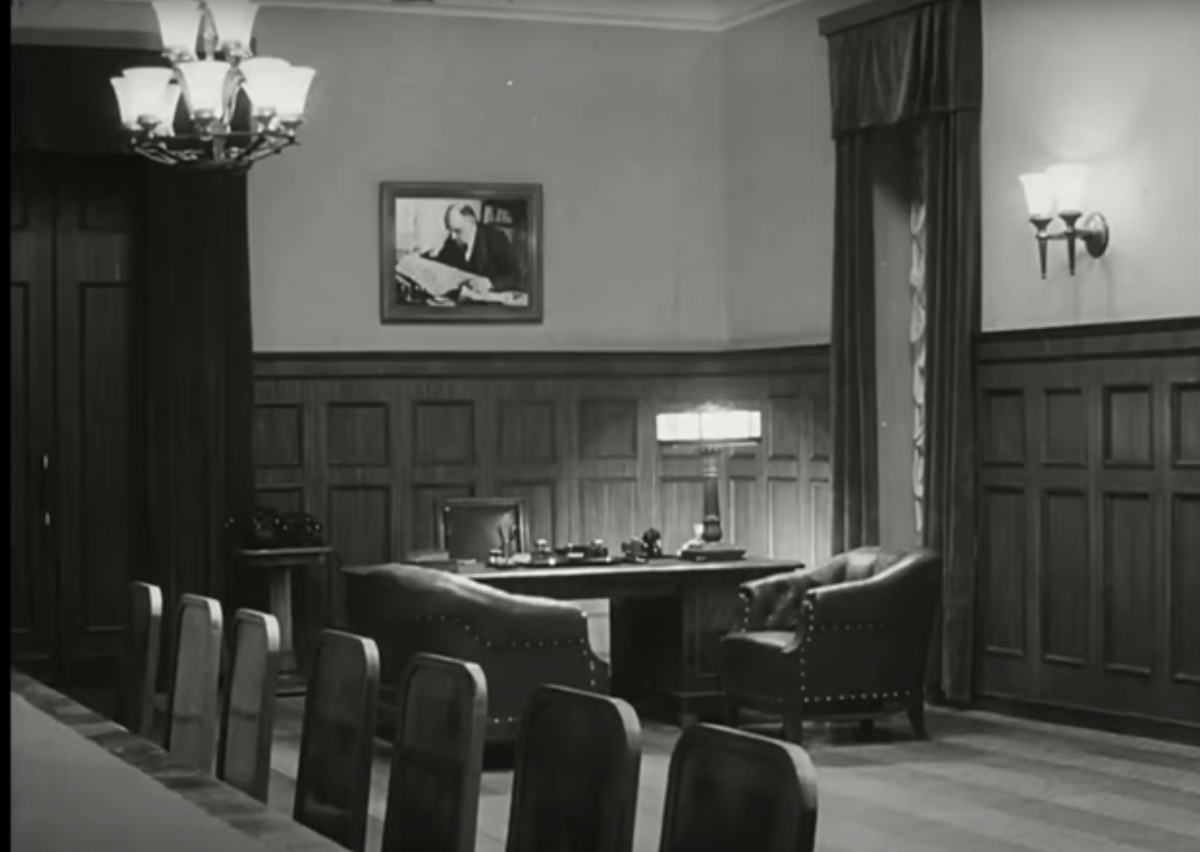
Until May 1945, the Germans were lied to by Joseph Goebbels, then by others. We will now discuss how these lies completely destroyed the Germans' comprehension of history, using a few examples.
After the Nazis, the US Needed a New Enemy.
War is a Highly Profitable Business—for a Few
The average citizen views war from the perspective of the masses and sees an image of destruction, death, and deprivation. However, the financial elites of a country see this completely differently. War is a huge business, and the amounts of money spent on war-related goods are astronomical, with heavenly profit margins for those involved. When it became apparent in 1943 that Germany would lose the war, the financial elites in the US were already concerned that the peace would dry up the windfall they had enjoyed from the gigantic arms contracts. These elites were not only very wealthy, they also had enormous political influence, because in addition to the ability to manufacture armaments, one also needs the influence to be able to sell them through political influence and corruption. Thus, the military-industrial complex was born.
Roosevelt Sought Lasting Peace—Others Did Not
Roosevelt and Stalin had a good working relationship. Roosevelt calling Stalin “Uncle Joe” was probably pure propaganda, but the good geopolitical relationship was based on Stalin keeping his word; he was a reliable ally. In addition, the Russians bore the brunt of the war against Hitler. Roosevelt sought a lasting peace after the war. A second Versailles was out of the question for him. His intention was to rebuild Germany and the Soviet Union and to provide both parties with equal amounts of aid. So much for Roosevelt's plans.
However, peace is not a good business model for the military-industrial complex. Since Roosevelt's health was already so poor in 1944 that it was rightly assumed that Roosevelt would be re-elected but would not live to see the end of his fourth term, a suitable vice president—a puppet—was sought. This was found in the person of Harry S. Truman. The problem for the group was now to get rid of the extremely liberal, popular, and peace-oriented Vice President Henry Wallace, who would have continued Roosevelt's strategy and thus stood in the way of the military-industrial complex. This undertaking was ultimately successful, albeit through the use of highly unscrupulous means. Roosevelt was pressured. Although Henry Wallace had a perfectly good chance of winning, Truman won the “election.”
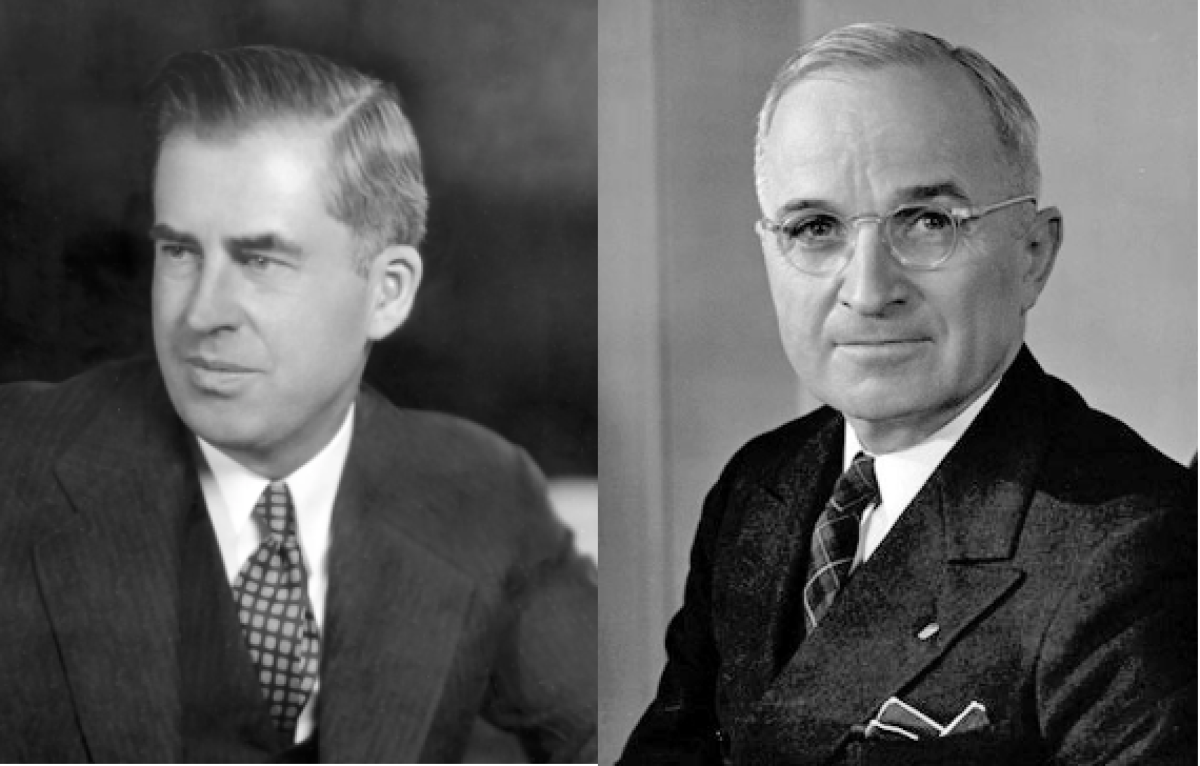
This “election,” which was not one, was impressively portrayed and analyzed by Oliver Stone in his magnificent series “The Untold History of the United States” in 2012, in the third part of the series. The documentary, which was produced by Showtime and initially available on Netflix, was banned from major streaming portals years ago: Oliver Stone's portrayal of the history of the United States is too poignant and too honest. No one should be subjected to this truth. I recommend every reader watch this series. If you ask the internet about this “election,” AI will still lie to you today that it was the right choice. This is an indication that this charade 80 years ago had a lasting impact on world history and that it still seems important to those in power today to keep the truth under wraps.
From Friend to Foe in the Blink of an Eye
During the war, Russia was celebrated as a great friend and ally, with top directors such as Frank Capra making propaganda films. I refer to the fifth part of the American propaganda film series “Why We Fight,” which was called “The Battle of Russia.”

Within the blink of an eye, however, Russia became the enemy again after the war. General Patton proposed attacking the USSR, and shortly thereafter the hunt for communists began in the US, with anyone they wanted to destroy simply being labeled a “communist.” This inhumane persecution of people bears no shame in comparison to the witch hunts of the Middle Ages.
“Despite this betrayal of the Soviet Union, Russia still uses diplomatic and friendly words toward the US, which is actually astonishing.”
We showed how untruthfully Russia's role in World War II is described today in an article published on the occasion of the May 9 celebrations, in which we contrasted the lies of Keir Starmer and Joe Biden with the statements of Winston Churchill and Franklin D. Roosevelt in the article “Western propaganda without limits: Unmasked.”
For me personally, this reversal, this betrayal at the time, which continues to this day, of the people who saved the world from the Nazis, is difficult to digest. The Americans must accept the accusation that they have repeatedly double-crossed the Russians over many decades and are also responsible, without any ifs or buts, for the military conflict in Ukraine. We have expressed our views on this in detail, most recently in our article “Trump-Putin: A Deal, Yalta or No Agreement.” Despite this betrayal of the Soviet Union, Russia still uses diplomatic and friendly words toward the US, which is actually astonishing.
From Enemy to Friend in the Blink of an Eye
In addition to a new enemy, which filled the coffers of the military-industrial complex thanks to perpetual rearmament, a counterweight in the form of a new “friend” and ally was also needed. Germany presented itself as the obvious choice, as the severe destruction of the country promised huge investments for reconstruction and thus large profits. In addition, the US was able to present itself as a noble, benevolent helper by initiating, among other things, the Marshall Plan shortly after the war, which was stylized as the anthem of the new American-German friendship.
However, there was one small, unsavory flaw in the whole thing, namely that the Germans were not only responsible for the Holocaust against the Jews, but had also behaved appallingly toward civilians in all the occupied countries, especially in the Soviet Union, where the Germans had slaughtered no fewer than 15 million civilians. Thus, the Nazis had achieved half of the goal set out in the General Plan East, which was to kill or starve 30 million people.
However, the practical-minded Americans came to the conclusion that many of these criminals were ideally suited to helping the new, good cause. In addition to operations such as “Paperclip,” which brought Nazi scientists to the US, thousands of Nazis were reintegrated into German society. A few years after the war, they could be found in government, the secret service, universities, and large companies. This was astonishing, given that for years the Nazis had rightly been portrayed as serious criminals who belonged in front of a firing squad.
Americans don't need to be taught marketing. Here are a few examples of how the opposite of the truth was made palatable to the world, thus robbing Germans of their historical consciousness.
We had Nothing to do with the Whole Thing
Germans Become Victims
First, a huge show of atonement was staged for the West by hanging a few token Nazis during the Nuremberg trials (or rather, festival). Shortly thereafter, the tide turned. For example, the Russians were portrayed as rapists of German women. It is true that German women were raped by Russian soldiers—and, incidentally, by other Allied soldiers as well. In contrast to Germany and Japan, which encouraged or even ordered the rape and murder of civilians in occupied territories, the incidents in which Russian soldiers were the perpetrators were, statistically speaking, isolated cases.
This was also due to the fact that on January 19, 1945, Stalin issued an order regarding the conduct of his soldiers in the occupied territory that could not have been any clearer:
"Officers and soldiers of the Red Army! We are marching into enemy territory. Everyone must maintain self-control, everyone must be courageous... The population remaining in the conquered territories, regardless of whether they are Germans, Czechs, or Poles, must not be subjected to violence. The guilty will be punished according to the laws of wartime. Sexual relations with women are not permitted in the conquered territory. Those guilty of violence and rape will be shot."
Stalin's order of January 19, 1945
It is claimed that approximately 100,000 women were raped by Soviet soldiers. Incidentally, this figure comes from a doctor at Berlin's Charité hospital and is in no way substantiated, as he extrapolated the figures from his clinic to the whole of Germany. Nevertheless, we will use this figure for our following considerations.
There were approximately 10 million Soviet soldiers in Germany. Statistically speaking, one in every hundred Soviet soldiers committed rape, but this figure is also misleading. Rapists are serial offenders. If we assume that one rapist raped 10 women, then 99.9% of Soviet soldiers behaved correctly towards German women. In contrast, 15 million Soviet citizens were killed by approximately 3 million German soldiers. Statistically speaking, every German soldier murdered 5 Soviet citizens. So much for proportionality. This is not about relativizing the rapes themselves, which were an unparalleled tragedy and an inexcusable act.
The 100,000 raped women are, of course, still a major topic in the German press today. However, there is no mention of the 15 million civilian deaths. The vicious propaganda that began 80 years ago continues unabated—today in preparation for the next war against Russia.
Almost all Einsatzgruppen Butchers got Away with It
Before the Jews were industrially murdered in concentration and extermination camps, four so-called Einsatzgruppen (task forces) were set up. These groups, consisting of 400 to 1,000 soldiers, had the task between 1941 and 1943 of systematically killing not only Jews but all so-called subhumans, including Russian civilians, in the conquered territories of the Soviet Union.
The units, mostly made up of ordinary soldiers, slaughtered around one million people, including women, children, and the elderly. Today, we know that the claim of being under orders, which was regularly cited as justification by the perpetrators, does not stand up to scrutiny. Every soldier had the opportunity to refuse to take part in these actions. Refusal had no negative consequences for those involved. Many who found this task repugnant nevertheless participated, claiming to have done so out of a sense of duty and loyalty to their comrades.
Otto Ohlendorf led one of these task forces, which, incidentally, was attached to Manstein's army—more on that later—and on January 6, 1946, as a witness for the prosecution in the main trial at Nuremberg, he described his work dispassionately and truthfully.
In the subsequent separate Einsatzgruppen trial, consistent verdicts were handed down: all 24 defendants were found guilty.
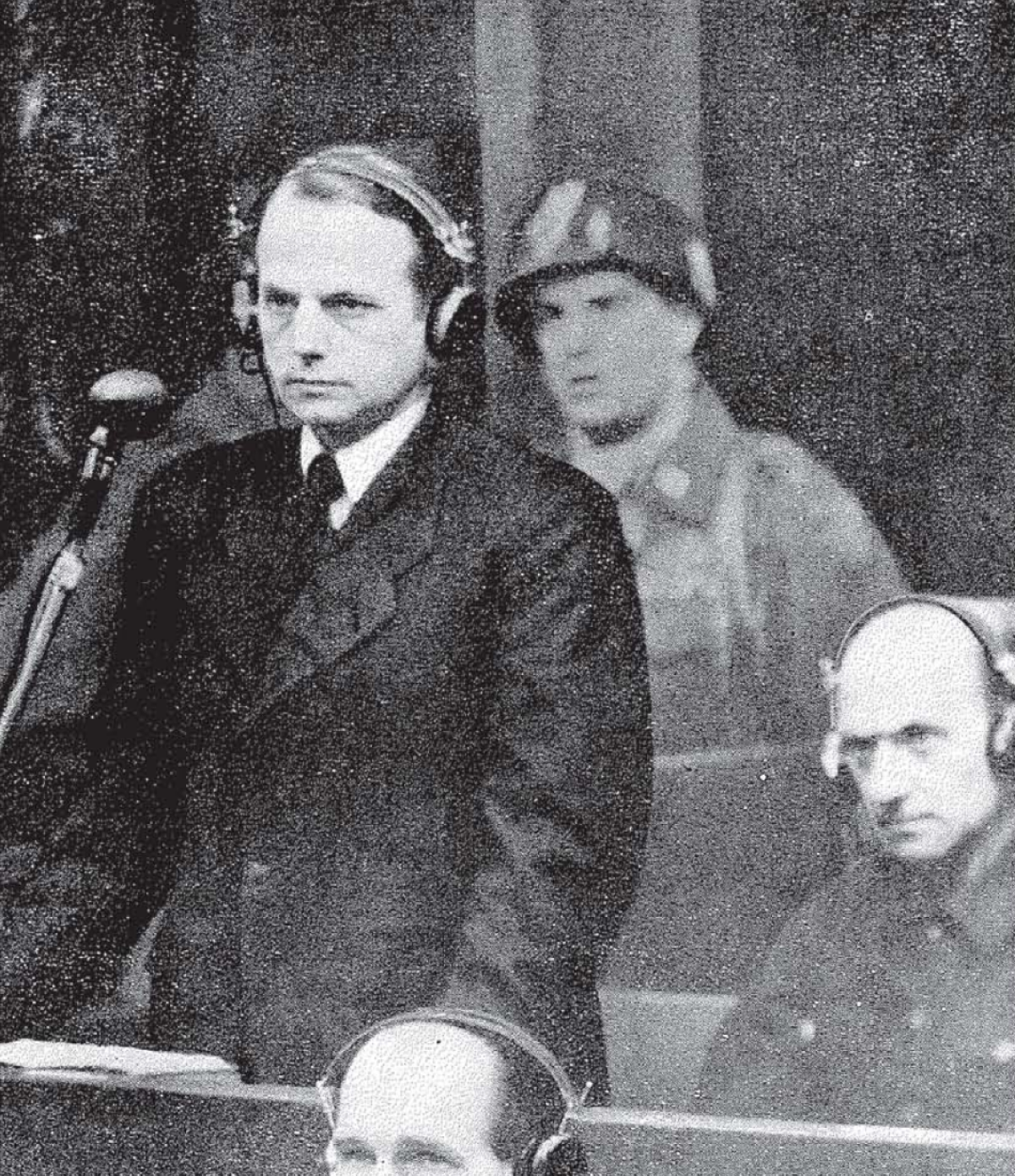
Fourteen of them received the death penalty, two were sentenced to life imprisonment, and the rest received prison sentences ranging from 10 to 20 years. However, the consistent severe punishment of the perpetrators in the Einsatzgruppen trial evaporated into thin air: of the 14 sentenced to death, only three were executed, including Ohlendorf. All the other convicts were released between 1951 and 1958.
Manstein – Hero Instead of War Criminal
To this day, Erich von Manstein is internationally celebrated as a tactical genius. It is true that Manstein was an outstanding general. He is credited with the ingenious German strategy in the 1940 campaign in France, when the Germans launched a surprise attack through the Ardennes, thus completely taking the French by surprise. His successes in Sevastopol in 1941/1942 and Kharkov in 1943 are also worth mentioning. His heroic status as a general even influenced the Allied leaders. When Manstein was put on trial after the war, even Winston Churchill supported him financially in covering his legal costs. However, Manstein was – like all German frontline generals – a notorious war criminal.
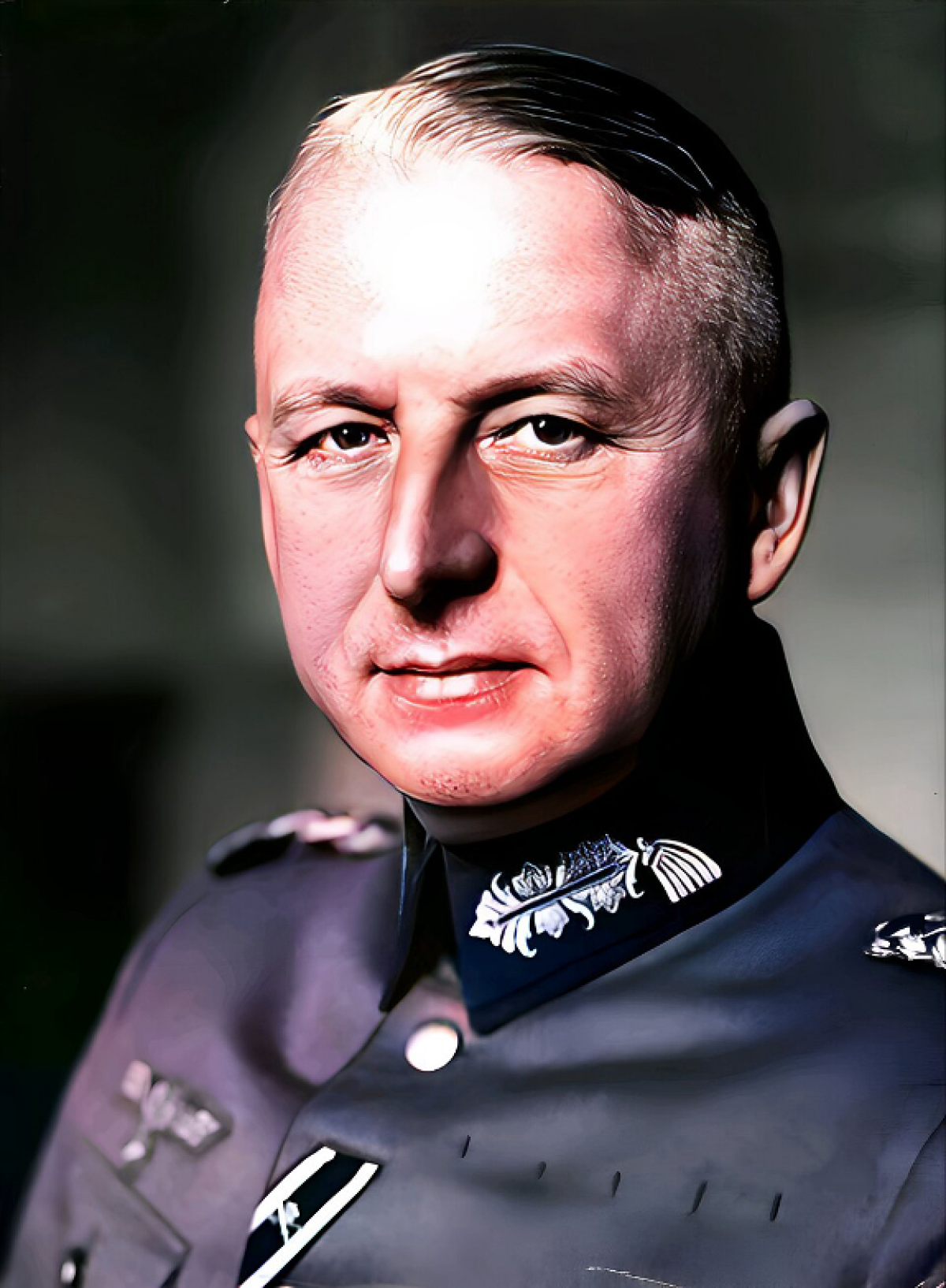
Dr. Ohlendorf testified to this effect: The task forces were not only assigned to the army groups, but also subordinate to them. Officers from the slaughter groups were assigned to Manstein's command group to coordinate the slaughter with the officers. In his testimony, Ohlendorf stated, among other things, that Manstein's command gave the order to carry out the “actions” at least 200 km away from the Wehrmacht. Thus, no questions remained unanswered. Von Manstein not only knew about the genocide, but also coordinated it with the SS. Although von Manstein was sentenced to 18 years in prison, he only served a short time and was released to write two bestsellers, Lost Victories (1955) and From a Soldier's Life (1958). I read part of Lost Victories: a whitewashing of his own achievements, in which all mistakes were blamed on the deceased Hitler and his arch-enemy Halder, omitting the genocide of the Russians that he coordinated. A nasty but convenient distortion of the facts.
I would like to point out that these examples have been picked from a pool of hundreds or thousands of unsavory facts to serve as examples of how the history of World War II and the periods that followed has been so thoroughly distorted that lies have become facts and facts have become lies.
Franz Halder – 15 million Russian Civilians on His Conscience
One of the most unsavory figures of the Third Reich was Franz Halder, who was Chief of the Army General Staff from 1938 to 1942. He was closely involved in the plans to conquer Russia and thus also in the genocide, and would certainly have deserved to be executed after the war.
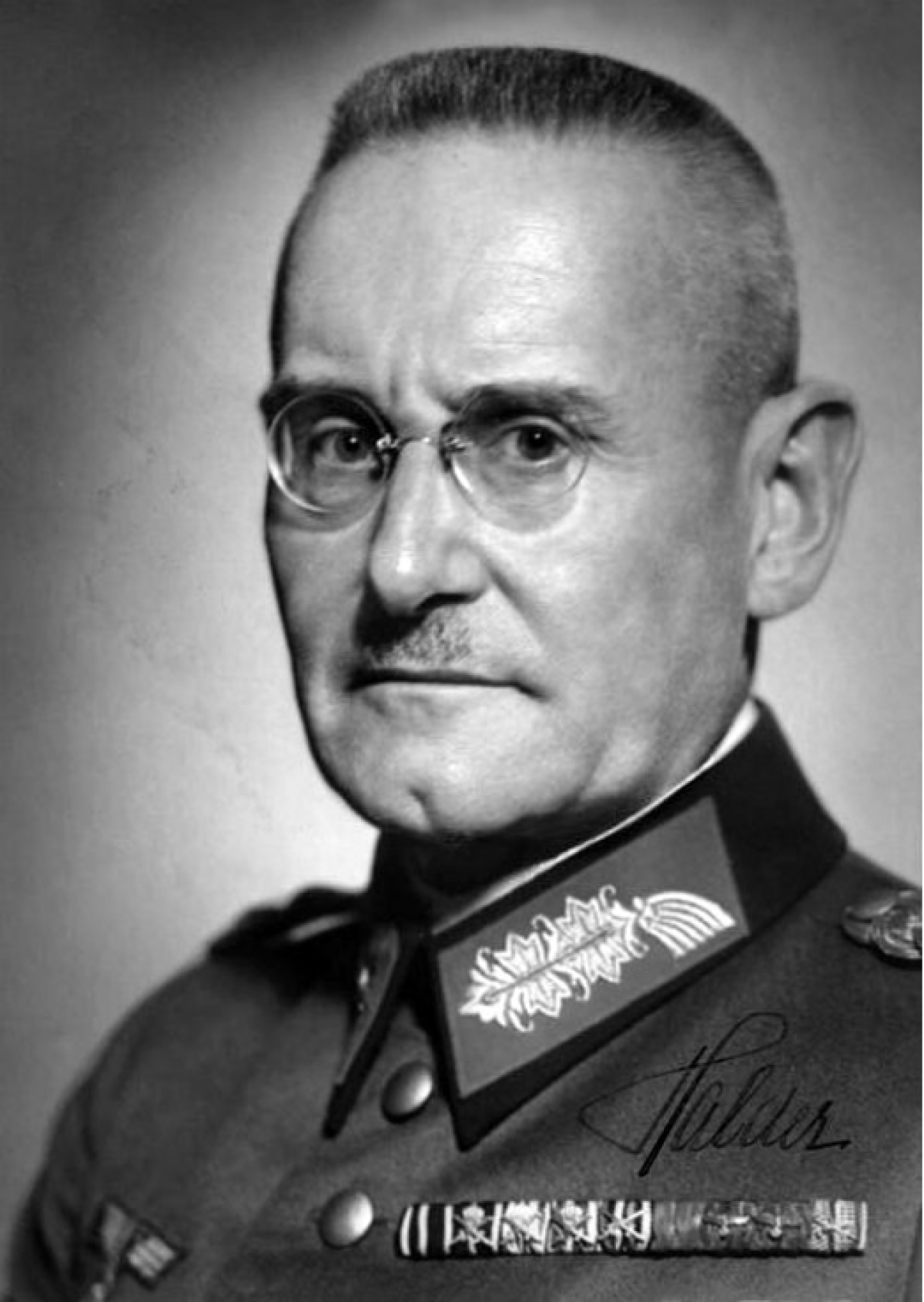
His department made the genocide of the Russian civilian population possible in the first place: the Commissar Order of June 6, 1941, which is more or less well known to the general public, obliged the German Eastern Army to separate all captured political officers of the Red Army from the front line and execute them on the spot. However, the so-called War Jurisdiction Decree of May 13, 1941, was a free pass for all members of the German armed forces to slaughter the Soviet population.
The order is central to the genocide in several respects:
Firstly, the order was not issued by Heinrich Himmler, head of the SS. This is important in the context that since World War II, attempts have been made to blame genocide and war crimes on the SS in order to whitewash the Wehrmacht. The order came from the head of the Wehrmacht High Command, Wilhelm Keitel. It was therefore addressed to the Wehrmacht and not to the SS.
Secondly, this order removed the decision to murder from the jurisdiction of the courts-martial and summary courts.
Thirdly, against localities that resisted the occupation—which was probably every locality that was attacked—collective measures of violence were ordered, i.e., genocide.
Fourthly, members of the armed forces who carried out this genocide were not prosecuted, as the following was formulated: “There is no obligation to prosecute acts committed by members of the Wehrmacht and their followers against enemy civilians, even if the act also constitutes a military crime or offense.”
In quantitative terms, Halder was thus worse than Reinhard Heydrich, for example, and would have deserved the worst fate. The opposite was the case: he was appointed by the US as head of the German section of the US Army's War History Research Group (Operational History (German) Section) and was commissioned to write the history of the Eastern Campaign. Halder romanticized the Nazis' Eastern Campaign as a preemptive strike and was the architect of the myth of the “clean Wehrmacht,” a narrative that does not stand up to the facts but is still anchored in the minds of Germans today – freely based on the motto: “SS bad, Wehrmacht good.”
Death of Hitler and Bormann – where is All the Money?
At this point, I would like to use two examples to show how flimsy the official versions of the whereabouts of two of Nazi Germany's most prominent figures really are. The following remarks are merely intended to show that official historiography may also be incorrect in the most important respects. The fact that there may be some truth in the following theories is already evident from the reactions of the guardians of official historiography: “Conspiracy theories!”
The Death of Adolf Hitler
Adolf Hitler officially died on April 30, 1945, by suicide in the Führer's bunker in Berlin. Much has been written and many films have been made about this, probably also to close this chapter, because many books and films make the outcome seem certain. There have always been theories that Hitler survived, but these theories have been reflexively dismissed as conspiracy theories. However, one story—which was, of course, also dismissed as a conspiracy theory—was researched in great detail. In 2011, British author Simon Dunstan and journalist Gerard Williams published the book “The Grey Wolf,” which was adapted into a docudrama in 2014. According to the story, Hitler fled to Argentina and died there in 1962. I read the book and watched the documentary, both of which were exciting and credible. However, I don't know if this story is true. What is surprising, though, is the fact that no university has taken up the matter.
Martin Bormann's Death
The death of Martin Bormann is also shrouded in legend. Officially, he died on May 2, 1945, while fleeing from the Führer's bunker. In 1972, Bormann's skull was found. However, there are three problems with this story. First, the skull was not found at the location where witnesses at the time claimed Bormann had died. Second, the skull contained soil that does not exist in Berlin, but only in Paraguay. In addition, a tooth on the skull showed signs of a treatment method that did not exist in 1945. Any theory that Bormann survived the war is dismissed as a conspiracy theory.
I have never looked into these stories in detail. However, life has taught me not to trust the “official” opinion. The fact is that after the war, thousands of Nazis fled to South America and lived there mostly unmolested—the exceptions that prove the rule are Adolf Eichmann, Klaus Barbie, and Erich Priebke. They were punished with much fanfare as token Nazis, but that was all.
Where is All the Money?
No clear investigation has ever been conducted into the whereabouts of the enormous assets that were moved out of Germany during the Nazi era, starting around 1943. Rumor has it that Bormann, who served as Hitler's treasurer, among other things, used every means possible to transfer huge amounts of assets in the form of gold, foreign currency, and patents abroad starting in 1943.
Mark Felton, a British historian who runs a very successful YouTube channel, showed in a post – Himmler's Fourth Reich – SS Assets in Global Conspiracy, that the SS not only became fabulously wealthy, among other things by operating hundreds of concentration camps, but that the SS strategically placed its people on the supervisory boards of large companies in Germany and thus effectively took control. On August 10, 1944, a meeting took place at the Hotel Maison Rouge in Strasbourg. At this meeting, which was attended by major industrialists, “underground activities” after the fall of the Third Reich and the transfer of assets to neutral countries were discussed.
It was never clarified what these capital flows looked like, how these huge sums flowed back after the war, and who was or is the owner of these assets today. To put it simply: Who owned “Deutschland AG”? Until the early 1990s, these included Deutsche Bank, Allianz, MAN, VEBY, VIAG, Thyssen Krupp, Klöckner Werke, Ruhrkohle, Daimler-Benz, VW, Preussag, Hoesch, Ruhrgas, Mannesmann, BASF, etc. These companies—or their predecessors—all already existed during the Nazi era.
You can assume that there are many very powerful people who have no interest whatsoever in clarifying the issues raised here. Too many unsavory details would come to light. It is very possible that these holdings are held directly or indirectly by today's giant financial conglomerates such as BlackRock, etc., which promise a level of opacity that is impossible to penetrate – mission accomplished.
Conclusion
“Russia will always remain an enemy to us” (Wadephul), “Putin is a war criminal. He is perhaps the most serious war criminal of our time, whom we are currently seeing on a large scale” (Merz). There is no country in world history that has behaved as cruelly toward another country as Germany has toward Russia—these atrocities took place decades, not centuries, ago.
Apart from the fact that Merz thus completely disqualifies himself not only as chancellor but also as a human being, he proves that Germany has no comprehension of history. Unlike Russia, Germany has not practiced and does not practice coming to terms with its history, questioning it, and drawing lessons from it for the future. History is presented in such a dishonest way that no one is willing to muster the energy to clean up the mess. This dishonesty was certainly discovered by the Germans—first under Hitler and then under the new regime, which was and is controlled by the US. Under Hitler, people were willing to sacrifice the welfare of Jews and civilians in the occupied territories; under the new government, history was sacrificed, both times for the sake of economic progress – a life lie and a pact with the devil.
This combination of devastating influences—a lack of comprehension of history and a pact with the devil—will cause history to repeat itself. If you are German and share this opinion, it is time to stand up.
«Historical Consciousness: What Germany Could Learn from Russia»